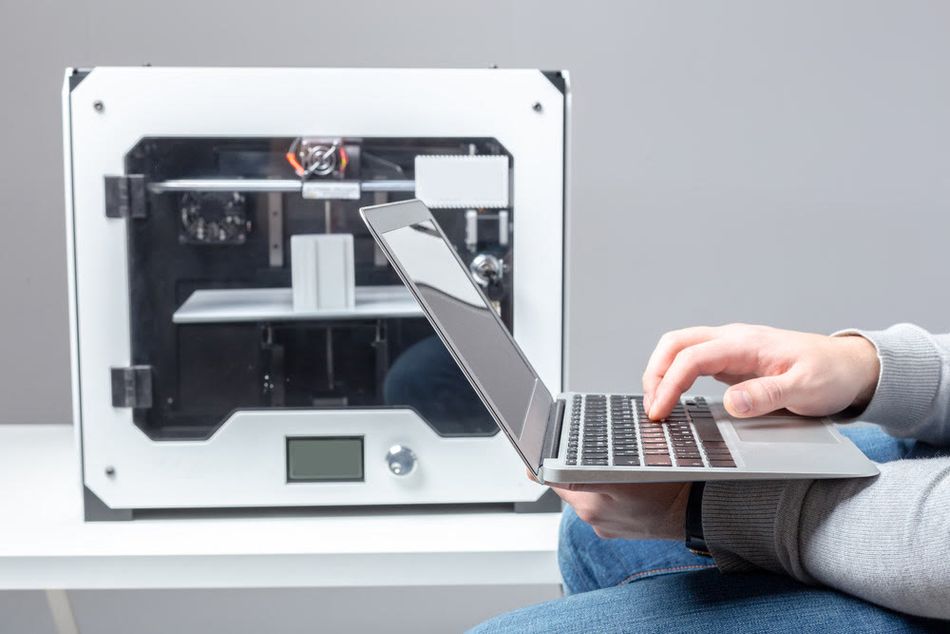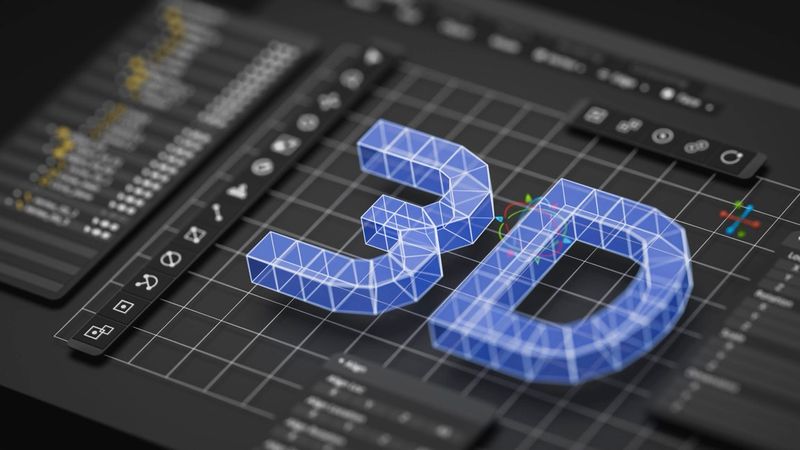Understanding 3D Printer File Formats (STL, OBJ, 3MF, and more): What Files do 3D Printers Use?
A concise guide to the different file formats available for 3D printing technologies, including STL, OBJ, AMF, 3MF, and what their role is in the AM process.
Prior to actually 3D printing a component, it is necessary to create a 3D model of the part. Typically, these models are designed in Computer-Aided Design (CAD) software, which enables users to manipulate and build shapes in three dimensions. However, it isn’t possible to send the part directly from CAD software to the 3D printer: the model must be exported as a file and subsequently imported into slicing software. The model must therefore be exported as a 3D printer file format, which is legible by slicing programs and can be converted into g-code.
Today, there are several different file types compatible with 3D printers, each of which has its unique properties and benefits. In this article, we’ll be covering the most common options for 3D printer file formats and answering some key questions that makers and professional users may have on the topic.
Common 3D printer file formats
3D printer file formats serve as an interface between digital design and the manufacturing process that turns 3D models into physical parts. They encode various properties of a 3D printed model, including its geometry, textures, colors, and potentially more, which can then be understood by slicer programs that generate the build instructions for the 3D printer (these instructions are known as g-code). Ultimately, 3D printer file formats ensure that the intricate details of a design are accurately translated into a physical form, making them indispensable in the realm of 3D printing.
There are several different file formats compatible with 3D printing, some of which are more universally applicable than others, and some of which can encode more 3D model properties. The encoding methods also vary, with STL using ASCII or binary encoding, while 3MF files utilizes a package of XML files to comprehensively describe a model, ensuring high compatibility with modern 3D printing technologies.
STL
The most common file format for 3D printing remains STL (Stereolithography). This file type, the native format of 3D Systems’ SLA 3D printing technology, is regarded for its universal compatibility with slicer programs and is suitable for many applications.[1] STL is among the simpler file formats as it only encodes the surface geometry of a 3D print (no texture or color properties) using triangular facets. This means that STL file formats are generally smaller than file formats that include more 3D model data and are thus faster to process. On the other hand, STL files can be limited for multi-color or multi-material 3D prints.
OBJ
OBJ is a more advanced 3D printer file format that is also broadly used in the 3D printing industry as well as for 3D graphics in video game design, architectural design and more. In fact, the file format was originally developed for animation software by Wavefront Technologies in the 1990s.[3] In addition to surface geometry data, OBJ files also contain information about texture and color. For that reason, OBJ is a good option for multi-color 3D printing techniques as well as for models that require very high resolutions and precision.
AMF
Additive Manufacturing File (AMF) format is an XML-based open standard that contains detailed information about the material, color, and more, allowing for more advanced printing options. This file type was specifically developed for 3D printing technologies by the American Society for Testing Materials (ASTM) in 2011 to improve on STL’s limitations.[1] Specifically, it uses the same triangular tessellation approach as SLS but also integrates curves, which allow for greater design fidelity. While AMF is compatible with most slicers, not all CAD programs are able to open or export AMF files.
3MF
3D Manufacturing Format (3MF) is a more recent file format designed to solve the limitations of other file formats, supporting full-fidelity 3D objects by including information about colors, textures, and print attributes. The file format was developed by the 3MF Consortium (comprising many members like Autodesk, 3D Systems, HP, EOS, and Stratasys) with the aim of establishing a standardized file format across the additive industry.[2]
Feature | STL | OBJ | AMF | 3MF |
Geometry | Basic | Advanced | Advanced | Advanced |
Color | No | Yes | Yes | Yes |
Texture | No | Yes | No | Yes |
Print Attributes | No | No | Yes | Yes |
There are also other file formats (not specific to 3D printing) that can be used with the technology, including FBX (Filmbox), PLY (Polygon File Format), and VRML (Virtual Reality Modeling Language).
Recommended reading: What is 3D Printing: A Comprehensive Guide to its Engineering Principles and Applications

Recent Developments in 3D Printing File Formats
It is worth noting that there are continual advancements to 3D printer file formats. For instance, recent advancements in 3D printing file formats have significantly enhanced their functionality, particularly in terms of material properties and metadata support. These improvements allow for more precise control over material distribution and characteristics, which are crucial for creating complex and functional objects. Additionally, updates in software algorithms have facilitated these advancements, enabling more efficient processing and better integration with 3D printing hardware. These developments not only improve the quality of printed objects but also expand the possibilities for innovation in additive manufacturing.
How 3D printer file formats are used
Selecting what 3D printer file format to use is important and the decision should take into account various factors like 3D model properties, the type of 3D printing technology being used, the resolution required, material properties, and application type. Here are a few examples of how the different file formats can and are used across industrial applications:
Aerospace: High-resolution formats like 3MF are chosen to handle complex geometries and precise material properties essential for aerospace components, which must withstand extreme conditions.
Automotive: Formats like STL and OBJ are commonly used for rapid prototyping of automotive parts, where speed and material efficiency are prioritized.
Healthcare: AMF and 3MF formats, which support detailed metadata, are preferred for creating customized prosthetics and anatomical models that require exact material gradients and color specifications.
These examples illustrate how the selection of file formats is tailored to enhance manufacturing processes by aligning with the technical requirements of each project.
Recommended reading: Your Guide to 3D Printing G-Code
Navigating Challenges: Technical Considerations
Addressing compatibility and standardization issues is a significant challenge in the realm of 3D printing. Different 3D printers and slicer programs can require specific file formats, which can lead to compatibility problems when sharing files between various machines or software.
Fortunately, efforts to standardize, through file formats like 3MF, aim to address these issues by providing a comprehensive format that can be universally accepted by various 3D printers.
Another technical challenge is related to error rates: high error rates can occur when files are not properly formatted for a specific printer's capabilities. This can lead to failed prints or poor-quality outputs. Tools like Meshmixer and Netfabb provide solutions for repairing and preparing files, ensuring they are optimized for specific printing processes.
These technical details highlight the importance of choosing the right file format and utilizing tools to ensure compatibility and reduce errors, ultimately enhancing the 3D printing process.
Recommended reading: How to find free STL files

Conclusion
The evolution of 3D printer file formats is a testament to the ongoing innovation in the field of additive manufacturing. From the simplicity and universality of STL to the advanced capabilities of 3MF, each format brings unique benefits and challenges to the table. As the industry continues to push the boundaries of what's possible, we can expect file formats to become even more standardized and sophisticated, incorporating greater support for material properties, higher fidelity in geometric representation, and improved compatibility across different printing platforms. The future of 3D printing hinges on these developments, promising to unlock new levels of efficiency, precision, and creativity in engineering.
FAQs
Q: What file format is used for 3D printing?
A: Several file formats are used for 3D printing, but the most common include STL (Stereolithography), OBJ (Object File Format), AMF (Additive Manufacturing File), and 3MF (3D Manufacturing Format). Each format has its specific uses depending on the requirements of the print job.
Q: What 3D printing file format has the smallest file size?
A: AMF and STL are known for their compressed file sizes, which enables faster processing by slicer programs.
Q: Is STL or OBJ better for 3D printing?
A: The choice between STL and OBJ depends on the requirements of your project. STL is widely used and supported by almost all 3D printing software and hardware but is limited to encoding the surface geometry of models without supporting color or texture information. OBJ files, on the other hand, can include color and texture data, making them better suited for multicolor or multi-material 3D printing.
Q: What is the best file system for 3D printing?
A: The "best" file format can vary based on specific needs, but 3MF is emerging as a strong contender due to its comprehensive support for modern 3D printing features like full-color textures, gradients, and other detailed attributes. It was designed to address the limitations of older formats like STL and OBJ, providing a more robust and versatile solution for advanced 3D printing applications.
Q: How do I convert a file to STL?
A: To convert a file to STL, you can use a variety of CAD (Computer-Aided Design) software tools. Popular options include Autodesk Fusion 360, SolidWorks, and Tinkercad. These programs allow you to import different file formats and export them as STL files. The process typically involves loading the original file, ensuring the model is suitable for conversion (e.g., checking for and repairing any mesh errors), and then exporting it as an STL file using the software's export function.
Q: What are the limitations of STL files in capturing material gradients, and how do newer formats overcome these limitations?
A: STL files are limited to encoding the surface geometry using triangular facets and cannot represent material gradients. Newer formats like AMF and 3MF can encode material properties at different points within the object, allowing for more complex and functional prints that accurately mimic the desired material characteristics and visual features.
References
[1] Iancu C. ABOUT 3D PRINTING FILE FORMATS. Annals of'Constantin Brancusi'University of Targu-Jiu. Engineering Series/Analele Universităţii Constantin Brâncuşi din Târgu-Jiu. Seria Inginerie. 2018 Apr 1(2).
[2] Why Use 3MF for Additive Manufacturing? [Internet]. 3MF Consortium, 2023. Available from: https://3mf.io/resources/why-use-3mf-for-additive-manufacturing/
[3] Wavefront OBJ File Format [Internet]. Library of Congress, 09/11/2020. Available from: https://www.loc.gov/preservation/digital/formats/fdd/fdd000507.shtml

